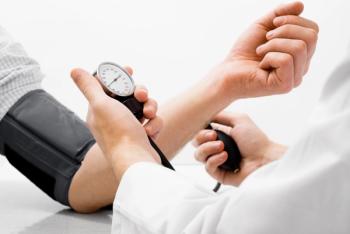
AHA: Stroke Symptoms, Even Those That Disappear Within 1 Hour, Need Emergency Attention
American Heart Association scientific statement recommends rapid evaluation for transient ischemic attacks.
Individuals who have transient ischemic attacks (TIAs), which are
The statement includes a standardized approach to evaluating individuals with suspected TIA, including guidance for hospitals in rural areas that may not have access to advanced imaging or an on-site neurologist.
“Confidently diagnosing a TIA is difficult, since most patients are back to normal function by the time they arrive at the emergency room,” Hardik Amin, MD, chair of the scientific statement writing committee and associate professor of neurology and medical stroke director at Yale New Haven Hospital, said in a statement.
“There also is variability across the country in the workup that TIA patients may receive. This may be due to geographic factors, limited resources at health care centers, or varying levels of comfort and experience among medical professionals,” Amin said.
The new statement also includes guidance intended to help health care professionals identify and understand the difference between a TIA and a “TIA mimic,” which is a condition that shares some signs with TIA, but is to the result of other medical conditions, including low blood sugar, migraines, or seizures. Symptoms of TIA mimic typically spread to other parts of the body and build in intensity over time.
Symptoms of TIA are the same as stroke symptoms, including facial drooping, numbness, and weakness on 1 side of the body, but they last less than an hour.
Individuals with cardiovascular risk factors, including diabetes, high blood pressure, high cholesterol, obesity, and smoking, are at a higher risk for stokes and TIA.
Other conditions may also increase the risk, including atrial fibrillation, coronary artery disease, obstructive sleep apnea, peripheral artery disease, and prior strokes.
After assessing the symptoms and medical history, imaging of blood vessels in the head and neck should be assessed, according to the AHA.
A computerized tomography scan can be used to rule out intracerebral hemorrhage and TIA mimics, while a magnetic resonance imaging scan can rule our brain injury.
The AHA also suggests blood work to rule out any other conditions that could cause TIA-like symptoms and to check for cardiovascular risk factors, including diabetes and high cholesterol.
Cardiac work-up can also be used once TIA is diagnosed to help with heart-related factors that cause TIA.
“Incorporating these steps for [individuals] with suspected TIA may help identify which patients would benefit from hospital admission vs those who might be safely discharged from the emergency room with close follow-up,” Amin said. “This guidance empowers physicians at both rural and urban academic settings with information to help reduce the risk of future stroke.”
Furthermore, physicians should use the 7-point ABCD2 score to assess an individual’s risk for future stroke after TIA based on age, blood pressure, clinical features, diabetes, and duration of symptoms.
Patients with a moderate (4 to 5 points) or high (6 to 7 points) score should be considered for hospitalization, according to the AHA.
Collaboration among health care professionals is essential to ensure that patients receive complete evaluations and well-communicated outpatient plans to help prevent future strokes, according to the authors of the statement.
Reference
Stroke symptoms, even if they disappear within an hour, need emergency assessment. EurekAlert. News release. January 19, 2023. Accessed January 20, 2023. https://www.eurekalert.org/news-releases/976672
Newsletter
Stay informed on drug updates, treatment guidelines, and pharmacy practice trends—subscribe to Pharmacy Times for weekly clinical insights.



















































































































































































































